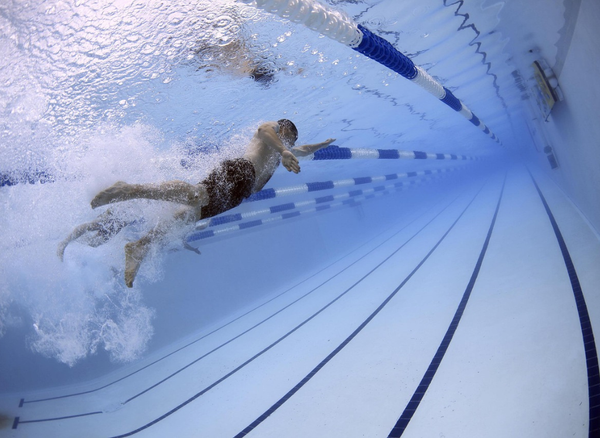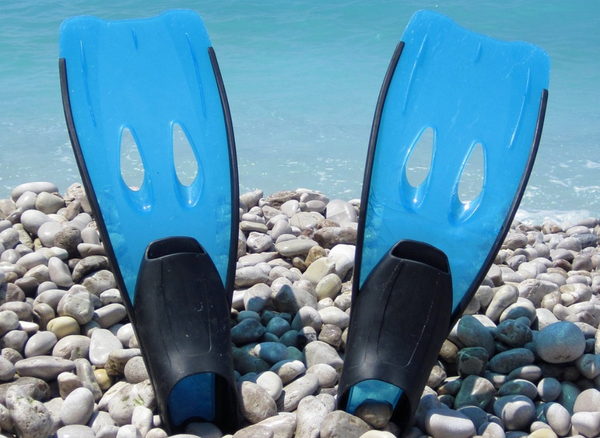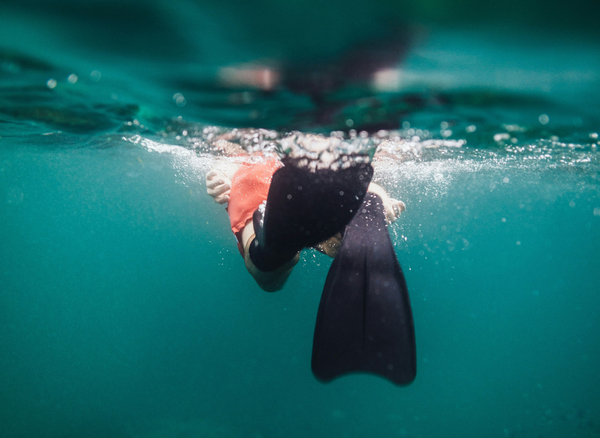Choosing swim fins is like picking the right pair of shoes for a marathon. You wouldn't wear stilettos to a 5K, would you? Similarly, the choice between short blade fins and long blade fins can make or break your swim training.
Shorter fins may be fitting for lap swimmers looking to improve their kick tempo and increase leg strength. They help you swim faster by enhancing your kicking technique and improving ankle flexibility.
On the flip side, longer blade fins are the gentle giants, ideal for those who enjoy a dolphin kick in open water. These fins provide more propulsion. If you're aiming to glide in the ocean like a majestic sea creature, longer fins might be your best bet.
1. Understanding the Purpose of Swim Fins
Swim fins are not just accessories; they are essential tools that can significantly enhance your swimming excursion. Whether you're a competitive swimmer, a casual beachgoer, or a snorkeler, the right pair of fins can improve your speed, technique, and overall enjoyment in the water.
For competitive swimmers, fins help in building strength and improving kick technique. They allow swimmers to focus on their upper body movements while the fins take care of propulsion.
On the other hand, snorkelers and divers use fins to conserve energy and move efficiently through the water, allowing them to explore underwater worlds with ease.
2. Types of Swim Fins
Swim fins come in various shapes and sizes, each designed for specific purposes. The most common types include closed full-foot fins and open-heel fins.
Full-foot fins are ideal for warm water and provide a snug fit, making them perfect for snorkeling and casual swimming. These fins are the snug socks of the swimming world. If you're a fan of just hitting the water without fussing over straps, closed heel fins might be your go-to.
Open-heel fins, on the other hand, offer a customizable fit with adjustable straps, making them a versatile choice for various shoe sizes. They're great for those who like to feel the water tickling their toes while maintaining a secure fit.
3. Material Matters
The material of the swim fin plays a crucial role in its performance and durability. Most fins are made from rubber or silicone.
Rubber fins are generally more durable and provide a stiffer feel, which can be beneficial for powerful kicks. However, they might not be as comfortable for prolonged use.
Silicone fins, on the other hand, are softer and more flexible, offering greater comfort. They are ideal for beginners or those who plan to spend extended periods in the water. It's important to try on different materials to see which feels best for your swimming style and comfort level.
4. Finding the Right Fit
For full foot fins, finding the right foot pocket is like finding the perfect pair of jeans—comfort is key. A well-fitting foot pocket ensures that your fins stay securely on your feet without causing blisters or discomfort. It's essential to consider your shoe size and try on different pairs to find the perfect fit. A well-fitting swim fin is like a glove for your foot.
Remember, a snug fit is crucial for effective kicking and propulsion. If your fins are too loose, you'll be flopping around like a fish out of water. Too tight, and you'll be wincing with every stroke. Aim for a fit that's just right, allowing you to focus on your swim without distractions.
When trying on fins, ensure there is no excessive movement or gaps between your foot and the fin. If you're purchasing open-heel fins, also consider the thickness of the booties you'll be wearing.
5. Performance Features to Look For
When selecting swim fins, consider features that enhance performance. Look for fins with channels, vents, or splits that help direct water flow, increasing propulsion and efficiency. Some fins also have angled blades that mimic the natural movement of the foot, reducing strain and improving speed.
Additionally, consider the weight of the fins. Lighter fins are easier to maneuver and can reduce fatigue, especially during long swims. However, heavier fins might provide more power, which can be beneficial for divers or those looking to build leg strength.
6. Budget Considerations
Swim fins come in a wide range of prices, from budget-friendly options to high-end models. While it's tempting to go for the cheapest option, investing in a quality pair of fins can make a significant difference in your swimming experience. Consider your needs and how often you'll be using the fins when setting your budget.
Remember, a higher price doesn't always equate to better quality. Look for fins that offer the best value for your money, balancing cost with features and durability. Reading reviews and seeking recommendations can also help you make an informed decision.
7. Brand Reputation and Reviews
In the world of swim gear, brand reputation can be a reliable indicator of quality. Established brands often have a track record of producing durable and effective swim fins. However, don't discount lesser-known brands that might offer innovative designs and competitive pricing.
8. Trying Before Buying
Whenever possible, try on swim fins before making a purchase. This hands-on approach allows you to assess the fit, comfort, and performance of the fins. Many swim shops offer the opportunity to test fins in a pool, giving you a real feel for how they perform in the water.
If trying before buying isn't an option, ensure the retailer has a good return policy. This way, you can exchange or return the fins if they don't meet your expectations. Remember, the right pair of fins should feel like an extension of your body, enhancing your swimming experience.
9. Maintenance and Care
Proper maintenance and care can extend the life of your swim fins, ensuring they remain effective and comfortable for years to come. Rinse your fins with fresh water after each use to remove salt, chlorine, and sand, which can degrade the material over time.
Store your fins in a cool, dry place away from direct sunlight to prevent warping or cracking. Avoid placing heavy objects on top of them, as this can deform the blades. Regularly inspect your fins for signs of wear and tear, and replace them if they become damaged.
Choosing Swim Fins FAQs
How do I know if my fins fit properly?
Your fins should fit snugly without causing discomfort. Ensure the foot pocket is secure, and the heel design suits your preference. Try different sizes to find the best fit.
Can I use the same fins for pool and open water swimming?
While you can use the same fins, it's advisable to choose fins that match your specific swimming environment. Short fins are better for pools, while longer fins are suited for open water.
How do fins improve my swimming technique?
Fins help refine your stroke, improve ankle flexibility, and increase leg strength. They provide propulsion, allowing you to focus on technique and body position.
What size swim fins should I buy?
Choose swim fins that fit snugly without being too tight. If you're between sizes, consider the type of swimming you'll be doing and whether you'll be wearing booties with open-heel fins.
Can swim fins help improve my swimming technique?
Yes, swim fins can help improve your swimming technique by allowing you to focus on upper body movements and providing additional propulsion for practicing kicks.
How do I care for my swim fins?
Rinse your fins with fresh water after each use, store them in a cool, dry place, and avoid exposing them to direct sunlight or heavy objects to prevent damage. Regularly inspect them for wear and tear.
Summary
Choosing the right swim fins is a balancing act between comfort, performance, and personal preference. Whether you're a scuba diver, snorkeler or a leisurely dolphin in open water, the right pair of fins can enhance your swimming experience. Consider your goals, environment, and fit to make the best choice for your needs.








